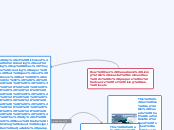How Can Canadians Living in coastal communities do to prepare in advance for rising sea levels.
The city of Richmond B.C. is creating and building up Dikes. They are creating super dikes that span out for more that 50 metres.
The city of Halifax, Nova Scotia is thinking about designing an adjustable parapet wall around wharfs similar to Boston's plan.
Home owners and Companies are choosing to relocate to places inland that are not at risk of rising sea levels.
Lennox island P.E.I. could lose it's bridge to mainland or lose the entire island.
Halifax Nova Scotia's harbor front, port and rail lines could all be submerged.
Charlemagne Quebec could lose entire neighborhoods to the st Lawrence River.
Metro Vancouver is the most vulnerable urban area in Canada, they will lose houses housing 250,000 residents with in one metre of a coastline.
A lot of coastal cities are vulnerable to rising sea levels.
A lot of the dikes are not high enough and since global warming is rapidly increasing, more water is coming.
10,000 communities would be flooded
The earths atmosphere and oceans are getting warmer.
Green house gases have warmed up our planet.
Glaciers and Ice sheets have been rapidly melting.
Water molecules expand when heated which means the oceans are taking up more space.
Rising sea levels will cost the world $14 trillion (14,000,000,000,000) a year by 2100.
It will cost $10 billion to build up against coastal and Fraser river flooding.
The federal government of Canada has put a side $2 billion in climate change mitigation fund in 2017
Thousands of miles of internet connection could be submerged with in the next 15 years a team of researchers found.
Cities like Vancouver, Halifax, Miami, Seattle and New York would be affected.
By 2033, researchers think that 4000 miles (6437.376 km) of network cables will be underwater.

This is an ice cap in Canada that has melted and formed a river leading into the oceans.

This is a home that was flooded by rising sea levels flooding the St Lawrence river

This is a chart in Canada that shows how sensitive areas in Canada are against rising sea levels.
the Inuit community moved 5 houses into warehouses
Unlike other coastal communities in Canada, Indigenous communities cannot afford to build walls or relocate inland

This is the Inuit community Tuktoyaktuk which is it risk and has already lost homes due to rising sea levels.
SubJune 18, 2007 the Inuit community of Tuktoyaktuk moved 5 houses because of the threat of erosion
Rising sea levels are making the foundation under homes moist and unstable.topic
